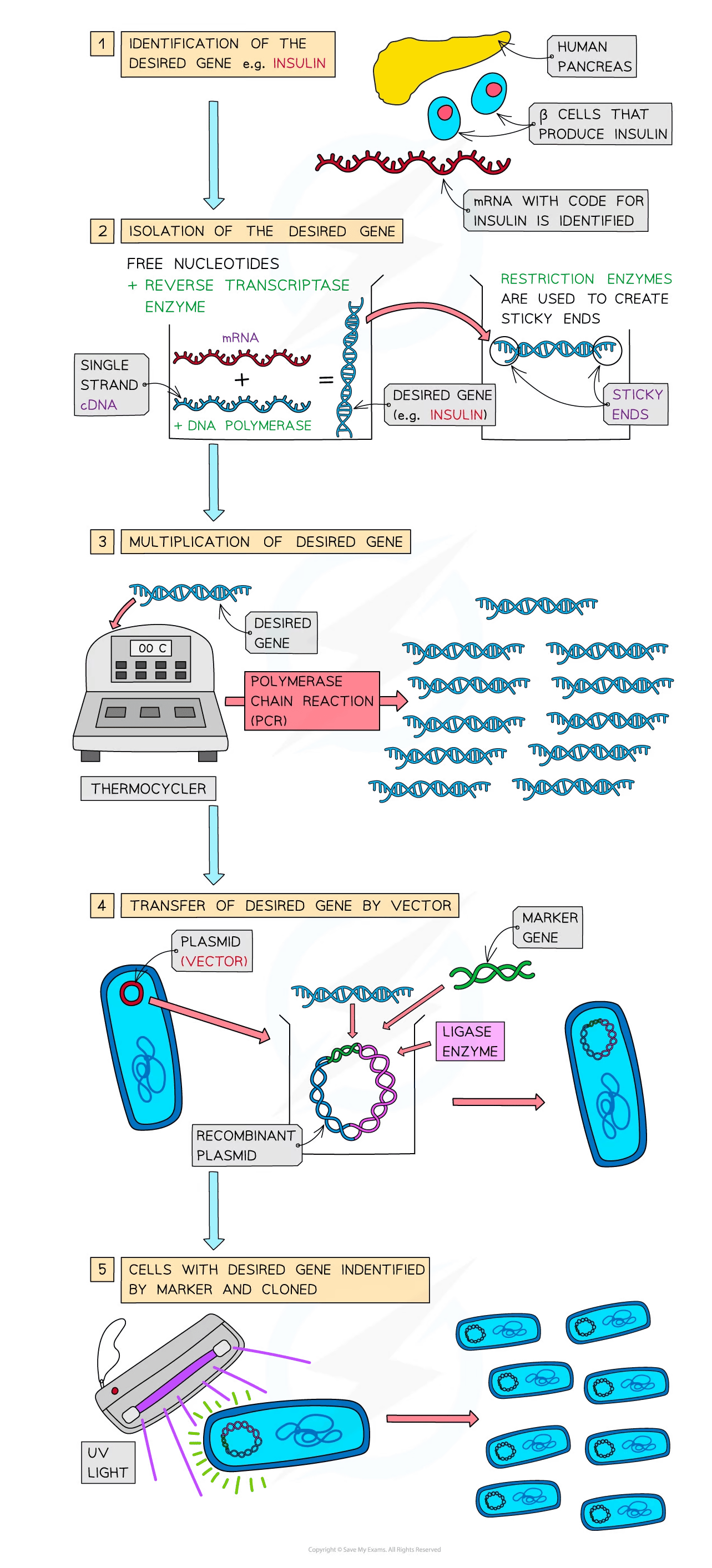Genetic Engineering (Cambridge (CIE) A Level Biology): Revision Note
Exam code: 9700
Genetic engineering explained
Genetic engineering is a technique used deliberately to modify a specific characteristic (or characteristics) of an organism
The technique involves removing a gene (or genes) with the desired characteristic from one organism and transferring the gene (using a vector) into another organism where the desired gene is then expressed
The genetically engineered organism will then contain recombinant DNA and will be a genetically modified organism (GMO)
For an organism to be genetically engineered the following steps must be taken:
Identification of the desired gene
Isolation of the desired gene by:
Cutting from a chromosome using enzymes (restriction endonucleases)
Using reverse transcriptase to make a single strand of complementary DNA (cDNA) from mRNA
Creating the gene artificially using nucleotides
Multiplication of the gene (using polymerase chain reaction - PCR)
Transfer into the organism using a vector (e.g. plasmids, viruses, liposomes)
Identification of the cells with the new gene (by using a marker), which is then cloned
Genetic engineers need the following to modify an organism:
Enzymes (restriction endonucleases, ligase and reverse transcriptase)
Vectors - used to deliver genes into a cell (eg. plasmids, viruses and liposomes)
Markers - genes that code for identifiable substances that can be tracked (e.g. GFP - a green fluorescent protein which fluoresces under UV light or GUS - β-glucuronidase enzyme which transforms colourless or non-fluorescent substrates into products that are coloured or fluorescent)
Genetic engineering is being used in the new field of science called synthetic biology
This is an area of research that studies the design and construction of different biological pathways, organisms and devices, as well as the redesigning of existing natural biological systems

Examiner Tips and Tricks
In your answer about genetic engineering you should remember to include the names of the enzymes (restriction endonucleases, reverse transcriptase, ligase) involved in genetic engineering and mention that markers (genes which can be identified) and vectors (transfer the desired gene) are also used.

Unlock more, it's free!
Did this page help you?